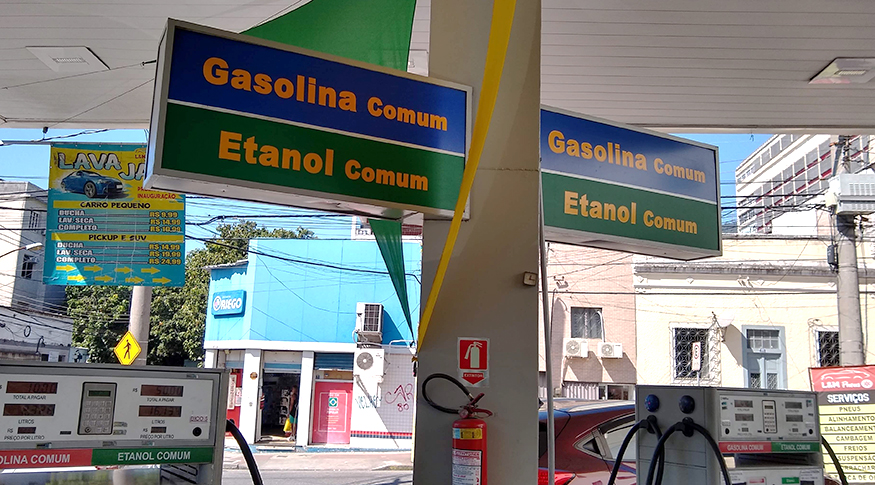IPCA
IPCA stays at -0.29% in September, third consecutive month of deflation
October 11, 2022 09h00 AM | Last Updated: October 11, 2022 03h15 PM

The Extended National Consumer Price Index (IPCA) changed -0.29% in September, the third consecutive month of deflation. The drop was less intense than those registered in July (-0.68%) and August (-0.36%). In the year, the cumulative inflation is 4.09% and, in the last 12 months, 7.17%. The data were released today (11) by the IBGE.
The group of transportation (-1.98%) exerted the greatest negative impact on the general index, contributing with -0.41 percentage points (p.p.). This is the third consecutive month of drop in transportation. “Fuels, mainly gasoline, have a huge weight within the IPCA. In July, the effect was bigger due to the establishment of a maximum ICMS rate. Moreover, the average price of that fuel sold to distributors has been reduced, which has contributed to the falling prices,” explains Pedro Kislanov, manager of the survey.
Having dropped 8.33% in September, gasoline exerted the most intense negative impact on the index (-0.42 p.p.). The other three fuels surveyed also had price drops: ethanol (-12.43%), diesel fuel (-4.57%) and vehicular gas (-0.23%). “Even with free prices, ethanol eventually followed gasoline, as it is a substitute product,” adds Kislanov. In that group, the prices of motorcycles (-0.08%), new cars (-0.15%) and used cars (-0.38%) retreated, though they had risen in August.
“The group of food and beverages changed from a rise of 0.24% in August to a drop of 0.51% in September, pressed by food at home (-0.86%). “Food has been rising since the beginning of the year, including sharp rises in March (2.42%) and April (2.06%). The drop in September is the first one since November 2021 (-0.04%),” states Kislanov.
The manager of the IPCA highlights that the product that mostly impacted this result was long-life milk (-13.71%), which contributed with -0.15 p.p. to the month´s result. “Milk has been rising a lot over the last 12 months, especially in 2022, due to the off-season period between March and April, but also due to the war in Ukraine, which increased a lot the prices of agricultural inputs. With the end of the off-season period and the return of rainfall, the product increased its supply in the market, producing a drop in the prices.” Despite the drop, the product still records a cumulative rate of 36.93% in the last 12 months.
Besides milk, the reduction in the prices of soybean oil (-6.27%) also stands out. “In the case of soybean oil, the explanation comes from the reduction in the price of soybeans in the foreign market, which has been falling since the end of June,” contextualizes him.
On the rising side among food, the highest increase came from onions (11.22%). “The reduced production in the Northeast has been causing such rise, coupled with a reduction in the planting area. Onions increased more than 120% over the last 12 months,” highlights the manager of the survey.
Wearing apparel was another group that rose (1.77%), which had already occurred in August (1.69%). All the items rose in September, highlighted by women’s wearing apparel (2.03%), which contributed with 0.03 p.p. Kislanov notes that this might be related with a restrained demand in the post-pandemic. “While many products registered a significant rise in their prices in the pandemic, wearing apparel did not, providing a lower comparison basis.
The rise in the group of personal expenses (0.95%) was leveraged by the increase in banking services (1.56%). In addition, services related with tourism, like lodging (2.88%) and tourism package (2.30%) also rose. “These rises are also explained by the upturn of services after the pandemic,” explains the manager.
The group of housing was another highlight, by accelerating between August (0.10%) and September (0.60%), especially due to residential electricity, which rose 0.78%, after falling 1.27% in the previous month. Kislanov explains that the increase is caused by the tariff adjustment recorded in Vitória and Belém.
In regional terms, only one out of 16 areas reported a positive change in September. The rise in Vitória (0.17%) was leveraged by the changes in water and sewage fees (13.01%) and residential electricity (4.95%). The lowest figure was registered in the metropolitan area of Fortaleza (-0.65%), mainly due to the drop of 11.05% in the prices of gasoline.
INPC drops 0.32% in September
The National Consumer Price Index (INPC) dropped 0.32% in September, a result very close to that reported in August (-0.31%). In the year, the INPC accumulates a rise of 4.32% and, in the last 12 months, of 7.19%. Food products changed from a rise of 0.26% in August to a drop of 0.51% in September. The prices of non-food products, in turn, continued to drop (-0.26%), though the retreat was lower than that of the previous month (-0.50%).
More about the surveys
The IPCA encompasses households with earnings between 1 and 40 minimum wages, whereas the INPC, households with earnings between 1 and 5 minimum wages, living in the Metropolitan Areas of Belém, Fortaleza, Recife, Salvador, Belo Horizonte, Vitória, Rio de Janeiro, São Paulo, Curitiba, Porto Alegre, as well as in the Federal District and in the municipalities of Goiânia, Campo Grande, Rio Branco, São Luís and Aracaju. Please access the data at Sidra.


















